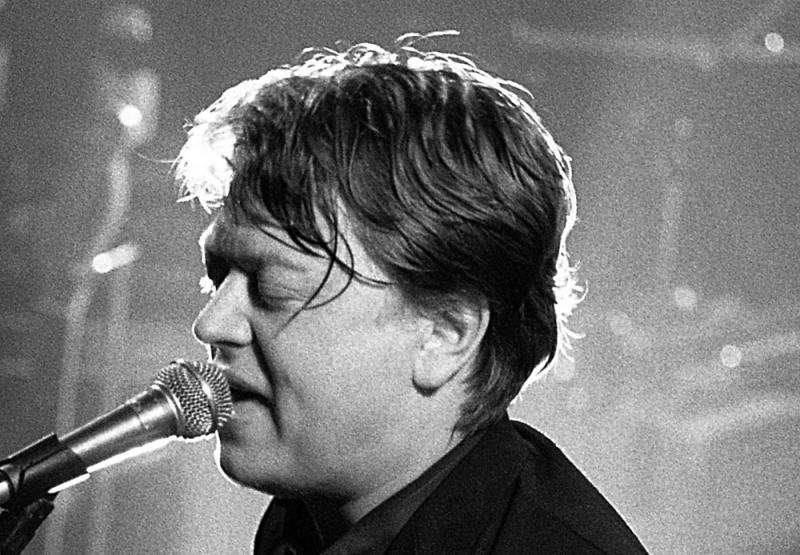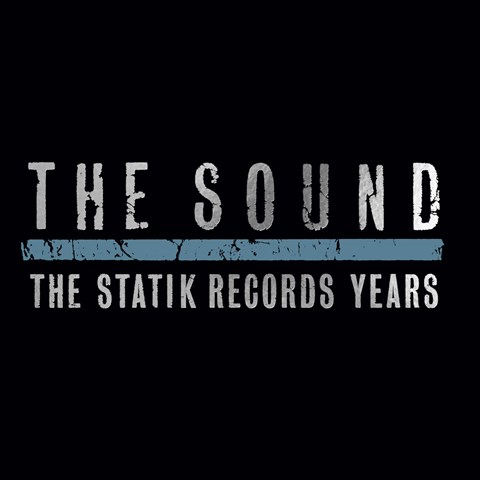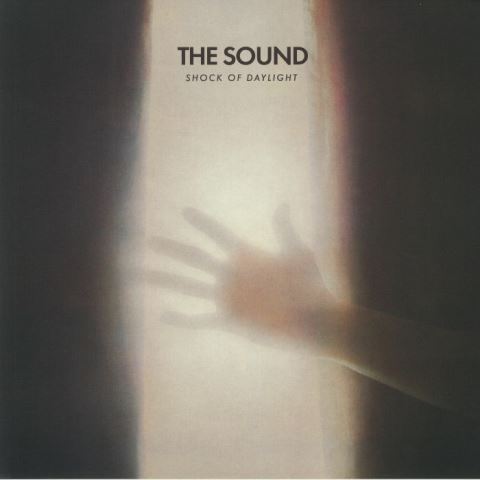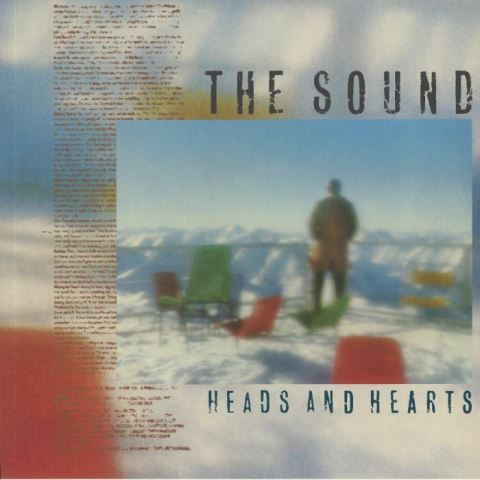Music Reissues Weekly: The Sound - The Statik Records Years | reviews, news & interviews
Music Reissues Weekly: The Sound - The Statik Records Years
Music Reissues Weekly: The Sound - The Statik Records Years
Box set focusing on the second chapter of Adrian Borland’s post-punk outfit

“There's a richness and a true depth here that places Jeopardy alongside (U2’s debut album) Boy as early Eighties tonics for ailing mainstream-rock. The Sound are on to a winner. There isn't one track here that isn't thoroughly compulsive. Overall it's a vastly impressive sound, with as much energy as I've heard on any record all year…the result is a form of sheer power-rock that doesn't make you blush or grimace.”
In November 1980, Sounds’ Dave McCullough was enthusiastic about The Sound’s first album Jeopardy. But he had some reservations about whether they could cut through to become more than a cult band – as was happening with U2. He pointed out a musical kinship with Liverpool’s Teardrop Explodes and Echo & the Bunnymen – The Sound and the Bunnymen were on the same label, Korova – but said “there is no style to speak of at all yet, a nice thought when you think of the currently garish and hyper-styled Bunnymen themselves.”
 Over 20 years after Jeopardy's release, London’s The Sound would variously be declared “a lost band,” one “crowded out by kings of angst” like the Bunnymen, Cure and Joy Division and a “tragically overlooked 1980s post-punk band.” An April 2002 feature in Uncut summarised Sound main-man Adrian Borland as saying “Bono took all my ideas, I coulda been a contender.” This, remarked the piece, “wasn't delusional, or beyond comprehension, but was undignified.”
Over 20 years after Jeopardy's release, London’s The Sound would variously be declared “a lost band,” one “crowded out by kings of angst” like the Bunnymen, Cure and Joy Division and a “tragically overlooked 1980s post-punk band.” An April 2002 feature in Uncut summarised Sound main-man Adrian Borland as saying “Bono took all my ideas, I coulda been a contender.” This, remarked the piece, “wasn't delusional, or beyond comprehension, but was undignified.”
The band he led issued five albums from 1980 to 1987. The first three were on Korova. The fourth came out on Statik, a label run by Laurie Dunn, the former export manager of Virgin Records. The last, the fragmented Thunder Up, was released by Play It Again Sam in 1987. The Sound fell apart in 1988.The five-CD clamshell set The Statik Records Years digs into their post-Korova second chapter.
Borland took his own life in April 1999 and any look back at The Sound is inevitably coloured by knowledge of his death. The essay in the set's booklet notes he “was suffering from Schizoaffective Disorder, a major mental illness.” According to band members quoted in the text, his illness wasn’t an issue until around 1986 when he “became very difficult to deal with on all sorts of levels.”
 Early on, The Sound were integral to a world where the Bunnymen, Cure, Teardrops and U2 were rising post-punk stars. Along with the similarly positioned Comsat Angels and Modern Eon, The Sound were looking to expand their audience. As the Sounds review attested, the auguries were good.
Early on, The Sound were integral to a world where the Bunnymen, Cure, Teardrops and U2 were rising post-punk stars. Along with the similarly positioned Comsat Angels and Modern Eon, The Sound were looking to expand their audience. As the Sounds review attested, the auguries were good.
However, The Sound were different to all these bands as they directly tracked-back to punk. Like Joy Division, they had operated with a slightly different line-up and under another name in 1977, and were similarly in thrall to Iggy Pop and, implicitly, The Doors. Joy Division had been Warsaw. The Sound had been The Outsiders, as whom they issued two albums and an EP. The change to The Sound came in autumn 1979. As it also was with Joy Division, much of their attack and forcefulness derived from having roots in 1977’s upheaval.
This wasn’t enough to commercially sustain them though. Unlike the Liverpool or Manchester bands, The Sound could not be tied-in with a scene. And they were mostly, if not solely, about the music so lacked a marketable image. No Mac the mouth figure in The Sound. Korova did not expand their audience. Perhaps their focus was on the Bunnymen? Maybe The Sound could have fared better had they been with a Factory type indie label, rather than one funded by multi-national company Warners? The Korova/Warners period resulted in three albums and four singles; all great. Even so, there was no rise in profile. The Sound and Warners parted company in late 1982. Statik was The Sound's next label.
 With Statik, which shut-up shop in 1986, The Sound released an EP, Shock Of Daylight (April 1984), a studio album, Head And Hearts (February 1985), a live album, In The Hothouse (November 1985) and five singles. All are collected on The Statik Records Years alongside a disc of demos first issued in 2015 and, on the final disc, a handful of previously unheard demos interspersed amongst non-album tracks from the period. Most of what’s here will already have been heard by fans.
With Statik, which shut-up shop in 1986, The Sound released an EP, Shock Of Daylight (April 1984), a studio album, Head And Hearts (February 1985), a live album, In The Hothouse (November 1985) and five singles. All are collected on The Statik Records Years alongside a disc of demos first issued in 2015 and, on the final disc, a handful of previously unheard demos interspersed amongst non-album tracks from the period. Most of what’s here will already have been heard by fans.
Shock Of Daylight catches The Sound at close-to their best: intense, melodic and textured. Head And Hearts seems – and seemed – smoothed-out, with Borland trying to be more immediate, poppy and less edgy, ultimately coming across as unengaged. In The Hothouse, recorded live in August 1985, was a lively to-date summary of where The Sound were at that point; a form of best-of. The demos and alternate versions collected on Discs Four and Five of The Statik Records Years don’t add understanding to the picture, but do confirm Borland was never standing still. He abruptly left the band during a 1988 gig and subsequently pursued an erratic solo career.
The Statik Records Years is not an entry point into The Sound. That will always be their essential Korova recordings. Nonetheless this set is integral to appreciating Adrian Borland and The Sound, helping to ensure they are not neglected.
- Next week: Musical Offering - Soviet-era recordings made on Russia’s ANS synthesizer
- More reissue reviews on theartsdesk
- Kieron Tyler’s website
Explore topics
Share this article
more New music
 Album: Justice - Hyperdrama
French electronic dance stalwarts return from eight-year break in fine fettle
Album: Justice - Hyperdrama
French electronic dance stalwarts return from eight-year break in fine fettle
 Album: St Vincent - All Born Screaming
Annie Clark transcends indie’s average leanings
Album: St Vincent - All Born Screaming
Annie Clark transcends indie’s average leanings
 Album: Pet Shop Boys - Nonetheless
Longing, love and longevity as the duo resolutely refuse retirement
Album: Pet Shop Boys - Nonetheless
Longing, love and longevity as the duo resolutely refuse retirement
 Album: Mdou Moctar - Funeral for Justice
Tuareg rockers are on fiery form
Album: Mdou Moctar - Funeral for Justice
Tuareg rockers are on fiery form
 Album: Fred Hersch - Silent, Listening
A 'nocturnal' album - or is it just plain dark?
Album: Fred Hersch - Silent, Listening
A 'nocturnal' album - or is it just plain dark?
 Music Reissues Weekly: Linda Smith - I So Liked Spring, Nothing Else Matters
The reappearance of two obscure - and great - albums by the American musical auteur
Music Reissues Weekly: Linda Smith - I So Liked Spring, Nothing Else Matters
The reappearance of two obscure - and great - albums by the American musical auteur
 The Songs of Joni Mitchell, Roundhouse review - fans (old and new) toast to an icon of our age
A stellar line up of artists reimagine some of Mitchell’s most magnificent works
The Songs of Joni Mitchell, Roundhouse review - fans (old and new) toast to an icon of our age
A stellar line up of artists reimagine some of Mitchell’s most magnificent works
 Album: Taylor Swift - The Tortured Poets Department: The Anthology
Taylor Swift bares her soul with a 31-track double album
Album: Taylor Swift - The Tortured Poets Department: The Anthology
Taylor Swift bares her soul with a 31-track double album
 Album: Jonny Drop • Andrew Ashong - The Puzzle Dust
Bottled sunshine from a Brit soul-jazz team-up
Album: Jonny Drop • Andrew Ashong - The Puzzle Dust
Bottled sunshine from a Brit soul-jazz team-up
 theartsdesk on Vinyl: Record Store Day Special 2024
Annual edition checking out records exclusively available on this year's Record Store Day
theartsdesk on Vinyl: Record Store Day Special 2024
Annual edition checking out records exclusively available on this year's Record Store Day
 Album: Pearl Jam - Dark Matter
Enduring grunge icons return full of energy, arguably their most empowered yet
Album: Pearl Jam - Dark Matter
Enduring grunge icons return full of energy, arguably their most empowered yet
 Album: Paraorchestra with Brett Anderson and Charles Hazlewood - Death Songbook
An uneven voyage into darkness
Album: Paraorchestra with Brett Anderson and Charles Hazlewood - Death Songbook
An uneven voyage into darkness

Add comment